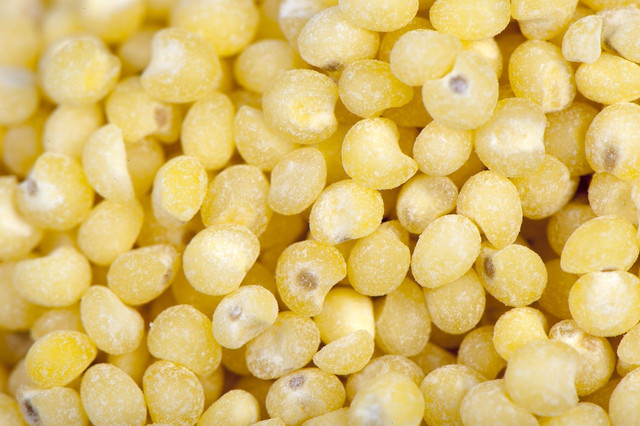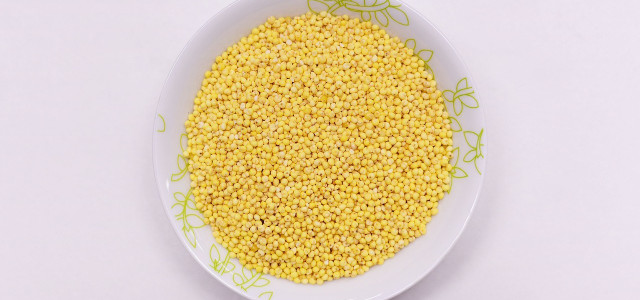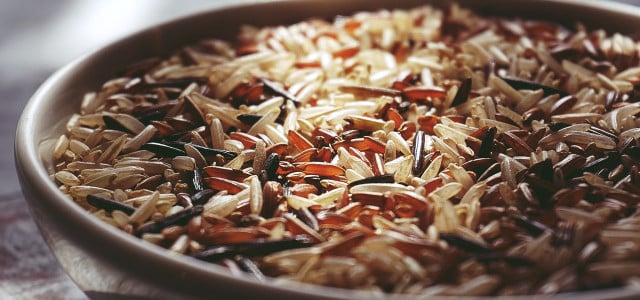Millet is similar to quinoa in that it's a seed rather than a grain, however its uses are similar to whole grains. Budget-friendly, versatile and easy to cook, here we offer some advice on how to cook millet perfectly every time.
Rich in iron, B vitamins and calcium, millet has a pleasantly mild taste and is naturally gluten-free. Once cooked, those little seeds have a creamy, slightly chewy texture — and thanks to its neutral flavor, millet is suitable for a huge range of sweet, as well as savory, dishes. Millet production in the United States is relatively sustainable since there is no known significant damage to air, water, top-soils, or plant life — just as long as syntehtic pesticides have not been used during growth and cultivation. In order to ensure you purchase the most sustainable millet, make sure it’s grown in the USA, organic, and non-GMO.
How to Cook Millet: A Simple Method

(Foto: CC0 / Pixabay / Aviavlad)
What You Need:
- 1 cup of raw, organic millet
- 2 cups of water
- ¼ tsp. of salt (optional)
- 1 tbsp. unsalted margarine or vegetable oil
- medium-sized saucepan with lid
Cooking Millet Step-by-Step:
-
In a medium-sized saucepan, toast the raw millet over medium heat for 3 or 4 minutes until it turns golden brown, and be careful not to let it burn.
-
Since the saucepan is already hot, add the water and salt give the millet a good stir so it doesn’t stick to the bottom.
-
Increase the heat to high and bring the mixture to a boil.
-
As soon as the water starts to boil, reduce heat to low, add either your margarine or oil and put on the lid.
-
Gently simmer for around 15 minutes, until the millet absorbs most of the water. Avoid stirring too much as this can soften the millet and give it a pasty texture which is not ideal.
-
Turn off the heat and let the millet sit for 10 minutes with the lid still on. This will allow the millet to fully absorb the rest of any remaining liquid.
Microwave Instructions:
- Put 1 cup of millet in a microwave-safe bowl.
- Add 2 cups of water.
- Cover the bowl and cook in the microwave on high for 20 minutes, or until the water is fully absorbed.
Versatility of Millet



(Foto: CC0 / Pixabay / martin_hetto)
Millet can be used as a whole seed to replace rice or ground into a flour to be used for baking. Millet is great as a side or as the base of a range of dishes including:
- African & Indian style curries
- Stews
- Millet risottos
- Asian stir fry, like this vegan chop suey
- Fresh salads
- Great as a stuffing/filling for grilled squash or eggplant
- Homemade falafel, or veggie burger patties
- Morning breakfast grains & porridge
- Tabbouleh
Millet is truly versatile and its neutral, slightly nutty flavor means that it will not overwhelm your chosen recipe even if you go a little overboard with it. Don’t be afraid to experiment a little with your favorite dishes and give millet a shot. You will definitely be pleased with the results.
Read more:
- How to Cook Amaranth: Basic Step-by-Step Instructions
- Cooking Sorghum: This Is How It’s Done
- Healthy Inca Grain? 9 Things You Need to Know About Quinoa
- How to Cook Bulgur Wheat: Basic Guide and 3 Easy Recipes
Do you like this post?







